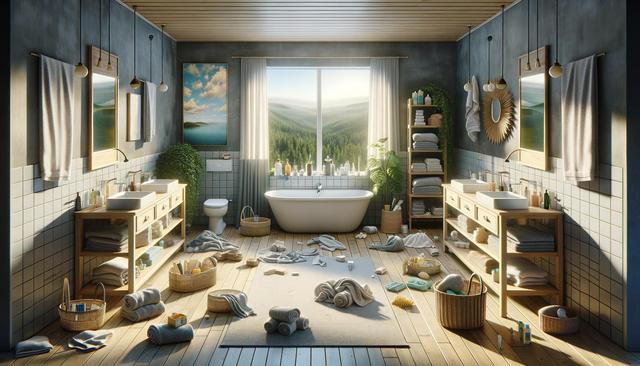Common Bathroom Remodel Mistakes to Avoid
Bathroom remodels often go wrong due to overlooked details. Avoid common mistakes like poor lighting, ignoring ventilation, or choosing trendy materials over durability. Planning for function, safety, and long-term usability is crucial for a successful renovation project.

Neglecting Proper Ventilation
One of the most commonly overlooked aspects of any bathroom remodel is ventilation. Bathrooms are naturally humid environments, and without proper airflow, moisture can lead to mold growth, peeling paint, and damage to wooden fixtures. It’s not enough to rely on a small window or a basic exhaust fan. Instead, consider installing a high-capacity ventilation system that is rated appropriately for the size of the bathroom. Keep in mind:
- Fans should be ducted to the exterior, not just the attic.
- Choose a fan with a timer or humidity sensor for automatic operation.
- Regularly clean and maintain the fan to ensure efficiency.
Proper ventilation also helps protect your investment in materials such as cabinetry, paint, and flooring by reducing excess moisture that can compromise their integrity over time.
Overlooking Storage Needs
Storage is often sacrificed for aesthetics in many remodels, but this can lead to daily frustration. While minimalist designs may look sleek, they may not provide the practicality needed for a functional bathroom. Before committing to a layout, assess how much storage is required for towels, toiletries, cleaning products, and personal items. Consider integrating:
- Recessed medicine cabinets to save space.
- Vanities with drawers rather than open shelving.
- Built-in niches in showers for soaps and shampoos.
Strategic storage solutions help maintain a clutter-free environment while preserving the visual appeal of the space. A balance between design and function ensures the bathroom remains both stylish and practical.
Choosing Style Over Durability
Trendy materials may look impressive on design blogs and in showrooms, but they don’t always hold up well under real-world conditions. High-maintenance tiles, delicate countertops, or bold finishes may quickly show wear and tear in a high-use area like a bathroom. When selecting materials, aim for options that offer both visual appeal and durability. Some considerations include:
- Porcelain or ceramic tiles for water resistance and easy cleaning.
- Quartz countertops for durability and low maintenance.
- Water-resistant paint and mold-resistant drywall in damp areas.
Opting for quality materials that can withstand daily use and moisture ensures your remodel remains attractive and functional for years to come, avoiding the need for premature repairs or replacements.
Inadequate Lighting Plans
Lighting plays a crucial role in both the functionality and ambiance of a bathroom, yet it’s frequently underplanned. A single overhead fixture often isn’t enough, especially in areas where precise tasks like shaving or applying makeup are performed. A layered lighting design can improve visibility and enhance the overall look of the space. Tips for effective lighting include:
- Incorporate task lighting at the vanity, such as sconces on either side of the mirror.
- Use ambient lighting to evenly illuminate the room.
- Consider accent lighting for design features like niches or artwork.
Dimmer switches can also help adjust the mood of the room, making it more versatile for different times of day and uses. Proper lighting enhances safety and comfort while highlighting the design features of the remodel.
Failing to Plan for Future Needs
It’s easy to focus on current preferences during a remodel, but forward-thinking design can significantly increase the usability and value of your bathroom over time. Whether you plan to age in place or eventually sell your home, incorporating features that accommodate future needs can be a wise investment. Consider adding:
- Grab bars in the shower or near the toilet for safety.
- Walk-in showers with no thresholds for accessibility.
- Non-slip flooring to reduce the risk of falls.
Universal design principles help make the bathroom accessible to users of all ages and abilities, increasing its usability without sacrificing style. These additions also contribute to the long-term functionality of the space, ensuring that it remains suitable for changing needs over time.
Conclusion
A successful bathroom remodel balances aesthetics, function, and future readiness. By avoiding common mistakes like poor ventilation, inadequate lighting, and insufficient storage, homeowners can create a space that is both beautiful and practical. Thoughtful planning and material selection play key roles in ensuring the finished room stands the test of time. Whether you’re updating a small powder room or transforming a master bath, focusing on usability and durability will help you achieve a satisfying and long-lasting result.